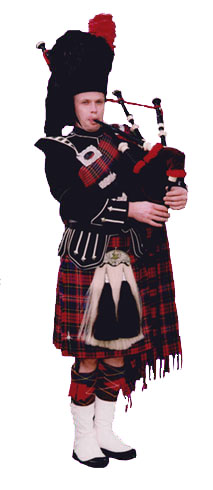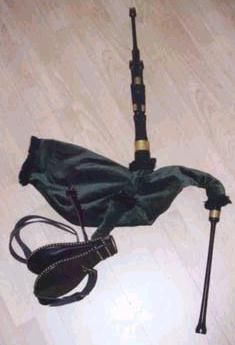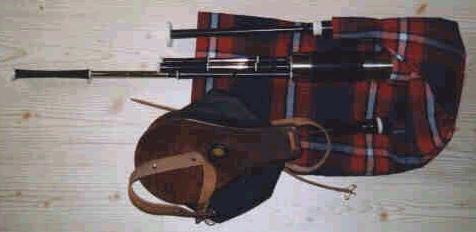

Events
History
 |
 |
||||||
| Home | About Bryce | Suggested Events |
Bagpipe History |
References | Links | ||
ancient history | modern history | sovereign pipers | Scottish small pipes | lowland music
The Scottish Small Pipe and Lowland Pipes
The Pipes
Lowland pipes were popular in Scotland until the middle of the last century. Historians have noted their important contribution to the culture of the South of Scotland and artists have left us a rich legacy of visual material relating to the instrument and its players.
A number of towns in the Scottish Borders had their own Lowland Pipers who were called on to play at the usual civic functions. For a number of reasons, including the advent of chromatic instruments such as the concertina and accordion, and perhaps the absence of a broad enough repertory, interest in the instrument faded, although many fine examples of early instruments survived in public and private collections.
I found it to be the complete answer for a Highland Piper who wished to play with other musicians without the usual problems of tuning or imbalance of volume.
The pipes are similar to Highland pipes but with three man differences:
- The drones are in a common stock.
- Air is supplied by bellows.
- The sound is mellower, allowing for indoor use.

The Lowland Pipes operate on exactly the same principle as the Highland pipes with the same necessity to keep the joints airtight and the bag seasoned. However, because the air used is relatively dry, it is usually only necessary to season the bag once or twice a year unless, of course, a synthetic bag is used. Hemp should always be resined as there is no moisture to swell it.
The reeds are as in the Highland Pipes but slightly smaller and with the great advantage that once set they need not be touched for months or even years. Air is sucked into the bellows through an inlet valve on the outside cheek of the bellows and it is forced into the bag through a valve in the connector piece. Both valves are one-way and require to have their hinge, indicated by a mark on the valve, to the top. The bellows also require to be kept airtight and it is worth checking this at regular intervals by pressing the palm of the hand over the outlet tube and pressing the bellows together.
When properly set up the pipes sound not unlike Highland pipes but with about half the volume thus allowing acoustic compatibility with the playing of a strong fiddler or accordion. The chanter is pitched in either A, Bb, C or D and tuning is as with the Highland pipes; a bass and two tenors tuned to the piper's low A.

BRYCE McCULLOCH
Tel +44 1655 882101
Mobile +44 7974 838742
BAGPIPES | HOME | LINKS | SOLO PIPER
GERMAN | ITALIAN | SPANISH | ENGLISH
Visitor Number